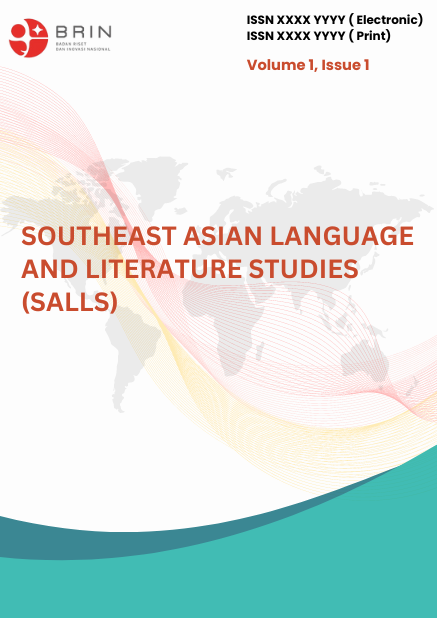Multilingualism and Diglossia of Mandarin Class Students in Perkumpulan Warga Yong Chun, Sukabumi, West Java
Main Article Content
Abstract
The Multiculturalism condition in Sukabumi people from the early time of the establishment of this city then had an impact on the linguist condition of its people, who became bilingual, and multilingual. This condition then becomes the background of this research, where the object would be focused on the Mandarin-speaking community, besides Sundanese as the region language. The purpose of this research is to measure the multilingual ability and regulate the conditions of diglossia in the speaking community, who joined the Mandarin Language class, in Perkumpulan Warga Yong Chun Sukabumi, West Java. This research uses the qualitative approach, with the descriptive method and perspective of sociolinguistics. The data was then collected using questionnaires and interview techniques. The data source comes from 35 respondents, who were the population of multicultural students, with ethnicity that comes from (1) Chinese, (2) Batak, (3) Javanese, and (4) Sundanese. The result of this research is then classified into two parts, that is multilingual phenomenon and diglossia. The multilingual phenomenon that found then divided into three research components such as (1) identifying the mother language of the student, according to their ethnicity, (2) measuring the language skills of Sundanese as the regional language with benchmarks (a) the ability to use Tatakrama basa, and (b) the ability to use Aksara Sunda Baku, and then (3) measure the language skills of Mandarin with benchmarks (a) the ability on using四声 (sìshēng) to differentiate tone, and (b) the ability on using简化字 (jiǎntǐzì) or Simplified Chinese, with 繁體字 (fántǐzì) or Traditional Chinese. Meanwhile, the diglossia phenomenon that occurs is then classified based on ethnicity, using linear polyglossia which divides languages into (1) high, (2) dummy high (3) medium, and (4) low levels, against (1) English, (2) Mandarin, (3) Indonesian, (4) Sundanese, and (5) mother language, dialect, or other regional languages.
Article Details

This work is licensed under a Creative Commons Attribution-ShareAlike 4.0 International License.
